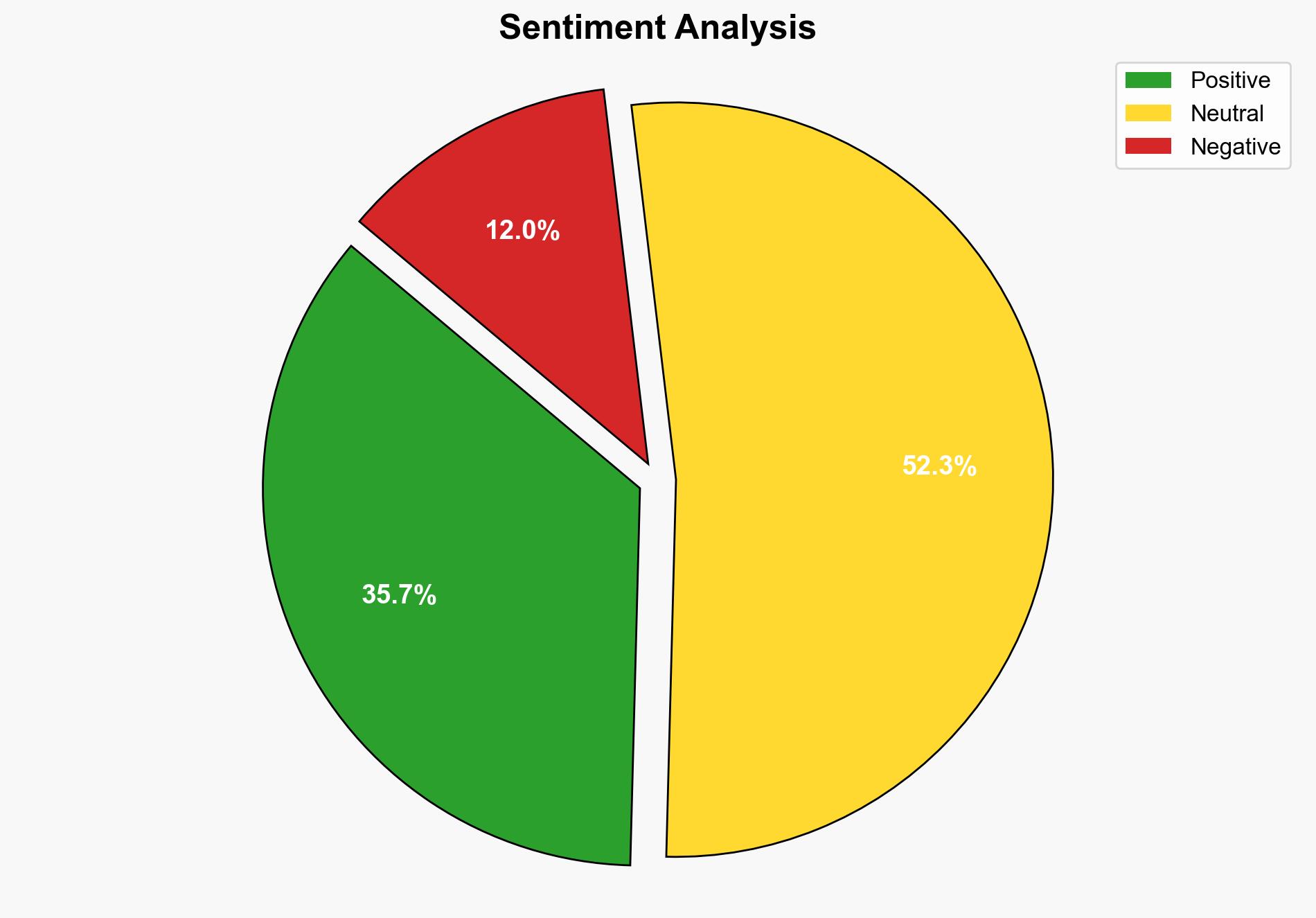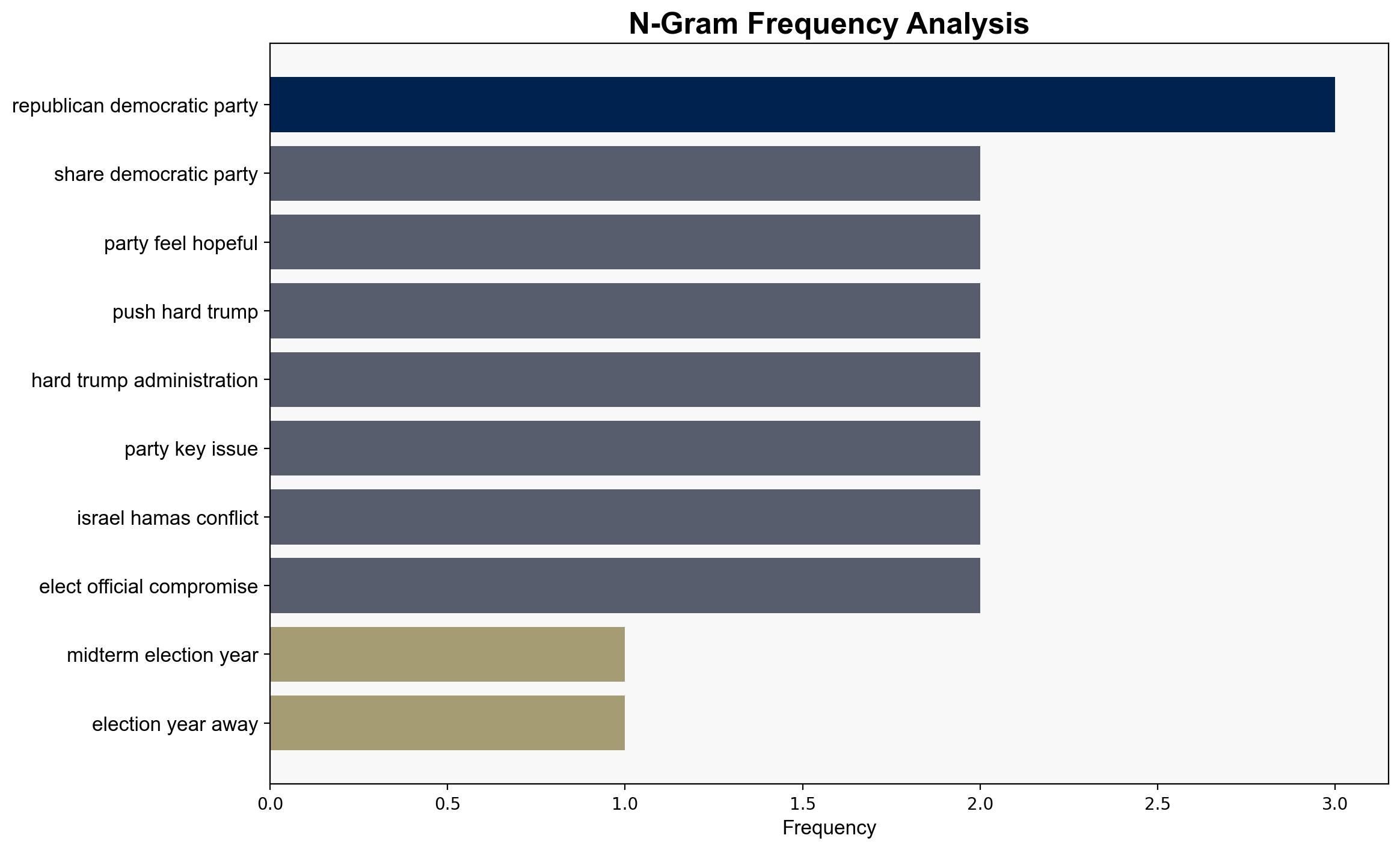A Year Ahead of the Midterms Americans Dim Views of Both Parties – Pew Research Center
Published on: 2025-10-30
Intelligence Report: A Year Ahead of the Midterms Americans Dim Views of Both Parties – Pew Research Center
1. BLUF (Bottom Line Up Front)
The analysis indicates a pervasive dissatisfaction among Americans with both major political parties, with neither party holding a clear advantage in public perception. The most supported hypothesis suggests that this dissatisfaction may lead to increased voter apathy and a potential decrease in voter turnout in the midterm elections. Confidence in this hypothesis is moderate. It is recommended to monitor shifts in public sentiment and engagement strategies by both parties to mitigate potential impacts on voter turnout.
2. Competing Hypotheses
1. **Hypothesis A**: The widespread dissatisfaction with both parties will lead to increased voter apathy, resulting in lower voter turnout in the upcoming midterm elections.
2. **Hypothesis B**: Despite dissatisfaction, the polarization and high-stakes nature of current political issues will drive higher voter engagement and turnout as voters feel compelled to support or oppose specific policies or candidates.
Using ACH 2.0, Hypothesis A is better supported by the data, which highlights significant frustration and lack of hope associated with both parties. However, the presence of high-profile issues such as immigration and economic policy could still mobilize voters, lending some support to Hypothesis B.
3. Key Assumptions and Red Flags
– **Assumptions**: It is assumed that public dissatisfaction directly correlates with voter turnout. Another assumption is that current party strategies will remain unchanged leading up to the elections.
– **Red Flags**: The survey data may not fully capture the nuances of voter motivation or the impact of emerging issues closer to the election date. Additionally, the potential for external events to shift public opinion is not accounted for.
4. Implications and Strategic Risks
– **Implications**: A decrease in voter turnout could lead to unexpected election outcomes, potentially affecting policy directions and party strategies.
– **Strategic Risks**: Low engagement may weaken democratic processes and increase the influence of more extreme or fringe elements within the political landscape. Economic and geopolitical issues could exacerbate polarization, leading to increased domestic instability.
5. Recommendations and Outlook
- **Monitor**: Continuously track public sentiment and engagement strategies by both parties.
- **Engage**: Encourage civic engagement initiatives to counteract potential voter apathy.
- **Scenario Projections**:
- **Best Case**: Increased voter engagement leads to a more representative election outcome.
- **Worst Case**: Significant voter apathy results in skewed election results and increased polarization.
- **Most Likely**: Moderate voter turnout with outcomes reflecting current public dissatisfaction.
6. Key Individuals and Entities
– The analysis does not focus on specific individuals but rather on the general public sentiment towards the Republican and Democratic parties.
7. Thematic Tags
national security threats, voter engagement, political polarization, public sentiment





